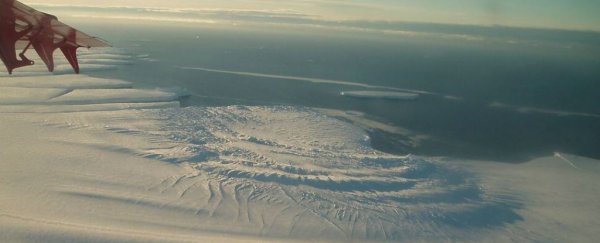An ice shelf in Antarctica is about to give birth to a baby. This baby is a giant, spawned by growing cracks in the Brunt Ice Shelf.
It's not clear what this'll mean to the scientific infrastructure in the area, and to the human presence, which were both established in the 1950s.
The Brunt Ice Shelf is located in the Coats Land area on the coast of the Waddell Sea in Antarctica. There are massive cracks in the ice there, which are about to create an iceberg over twice the size of New York City. One of the cracks is called the Halloween Crack because it first appeared near the end of October 2016.
The Halloween crack and the soon-to-be-calved iceberg are part of a bigger story in Antarctica.
In 1956, the British set up the Halley Research Station on the Brunt Ice Shelf. It was set up there to study Earth's atmosphere, and in 1985 scientists at Halley discovered the ozone hole. Over the years since it was established, it has been moved several times due to the threat posed by chasms and cracks in the ice.
Most recently, it was relocated in 2017, due to the growth of two chasms in the ice shelf it sits on, the Brunt Ice Shelf.
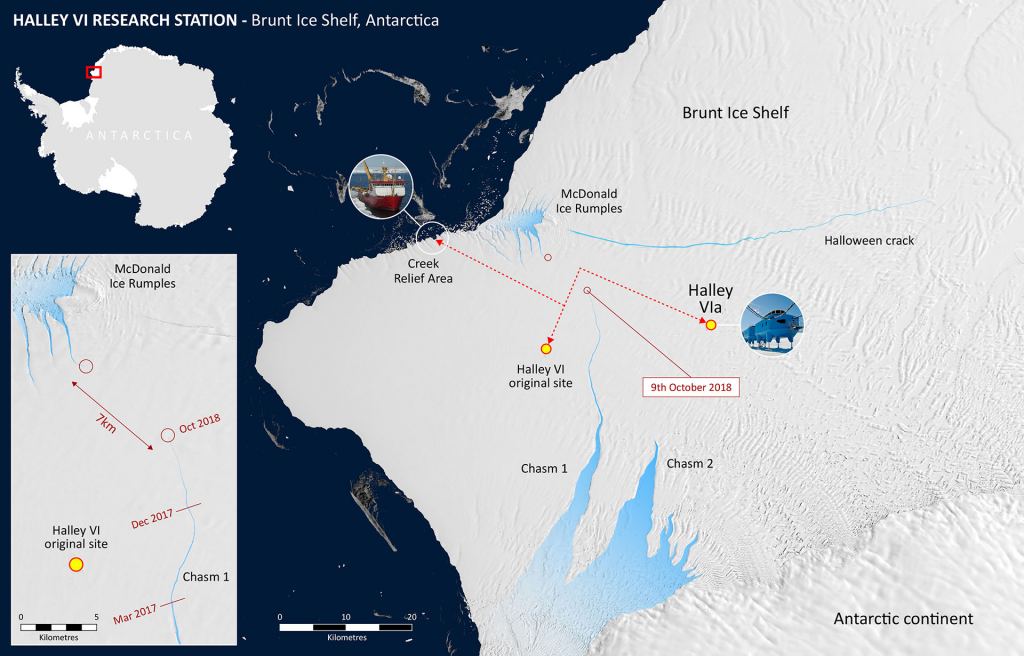 (British Antarctic Survey)
(British Antarctic Survey)
But now Chasm 1 is opening up faster and faster, putting the future of Halley Research Station into jeopardy. The chasm was stable for about 35 years, but lately it's been accelerating, growing northward as fast as 4 km per year. It's not clear where the Halloween Crack and the chasm will meet, but when they do, it could de-stabilize the entire ice shelf.
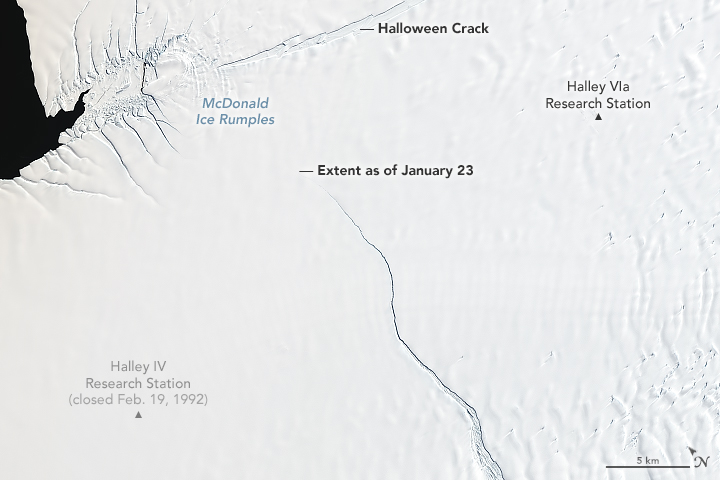 (British Antarctic Survey)
(British Antarctic Survey)
The McDonald Ice Rumples also play a role in this icy drama. Rumples are formed when ice flows over a rocky formation where the bedrock rises high enough to contact the underside of the ice shelf. The bedrock can impede the flow of ice, and that causes rifts, crevasses, and pressure waves. None of those are good for stability.
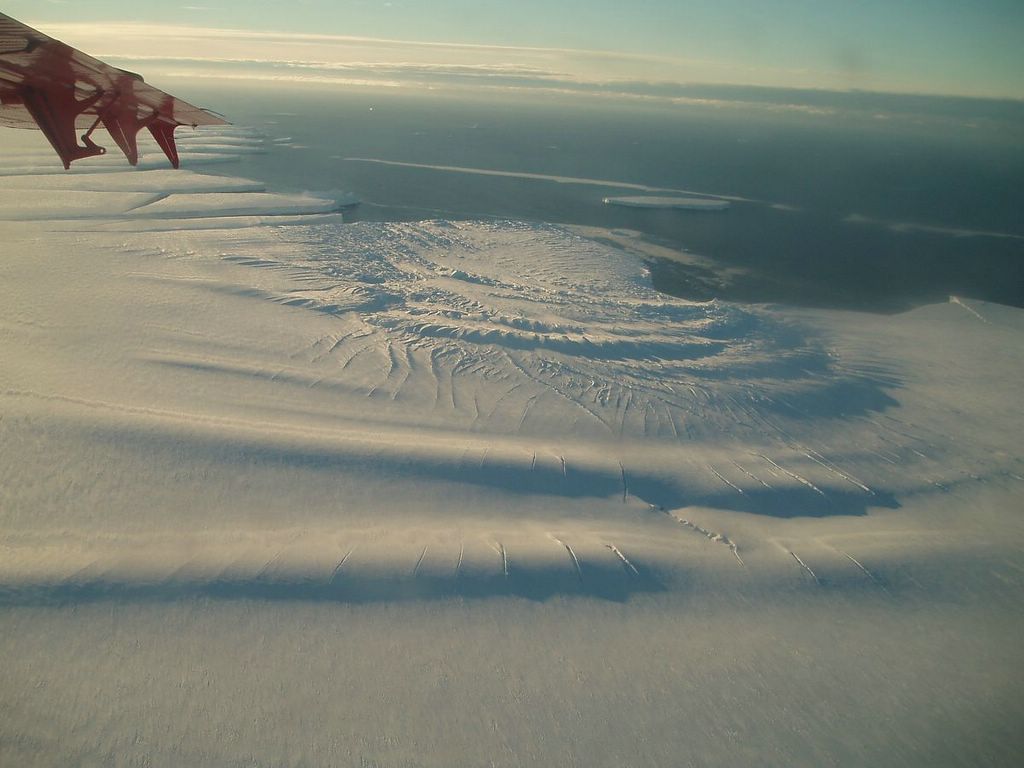 (NASA Earth Observatory)
(NASA Earth Observatory)
"The near-term future of Brunt Ice Shelf likely depends on where the existing rifts merge relative to the McDonald Ice Rumples," said Joe MacGregor, a glaciologist at NASA's Goddard Space Flight Center. "If they merge upstream (south) of the McDonald Ice Rumples, then it's possible that the ice shelf will be destabilized."
This would be the largest iceberg to ever break off from the Brunt Ice Shelf, at least since we've been paying attention, and scientists have been observing it since 1915. Calving isn't unusual for ice shelfs, but this level of change is unusual for the area.
"We don't have a clear picture of what drives the shelf's periods of advance and retreat through calving," said NASA/UMBC glaciologist Chris Shuman. "The likely future loss of the ice on the other side of the Halloween Crack suggests that more instability is possible, with associated risk to Halley VIa."
The iceberg will be about 1700 sq. km., depending on where the cracks meet. By Antarctic standards, that's not huge. But as stated previously, it would be the largest we've seen break off from the Brunt Ice Shelf. Of deeper concern is what it could mean for the stability of the remaining shelf.
The growing instability in the shelf has already meant that Halley Station has had to close down twice in recent years, and be relocated.
The growth of cracks in the ice is apparent in the following two images. They're both satellite images of the same area, taken 33 years apart. The top image is from January 1986. The bottom image is from January 2019.
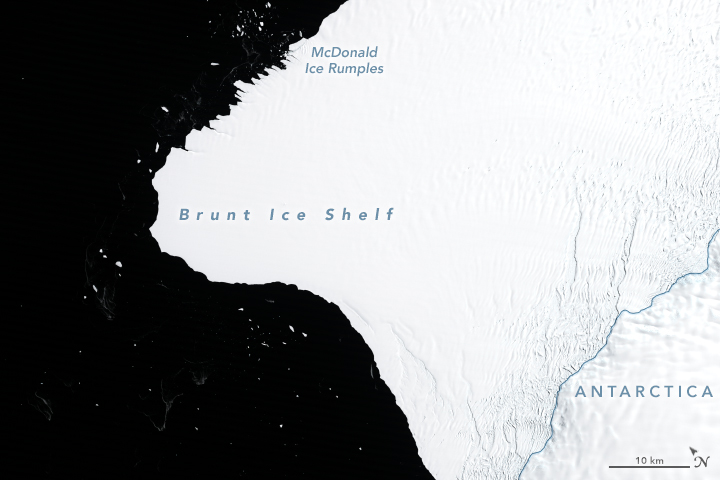 (NASA)
(NASA)
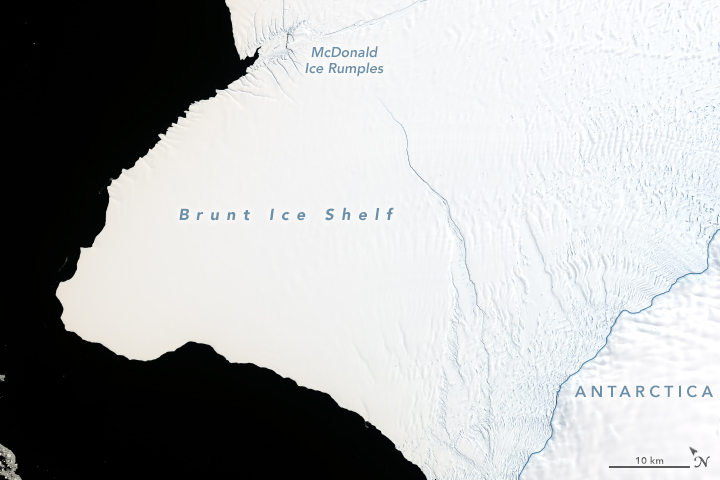 (NASA)
(NASA)
For now it's a waiting game for Antarctica, the Brunt Ice Shelf, and for the Halley Research Station. The research station has only been in its current location for a couple years. It may have to move again.
This article was originally published by Universe Today. Read the original article.
